‘Shogun’ Bosses Detail “Painstaking Process” to Re-Create Feudal Japan and Likelihood of Season 2
- Oops!Something went wrong.Please try again later.
- Oops!Something went wrong.Please try again later.
- Oops!Something went wrong.Please try again later.
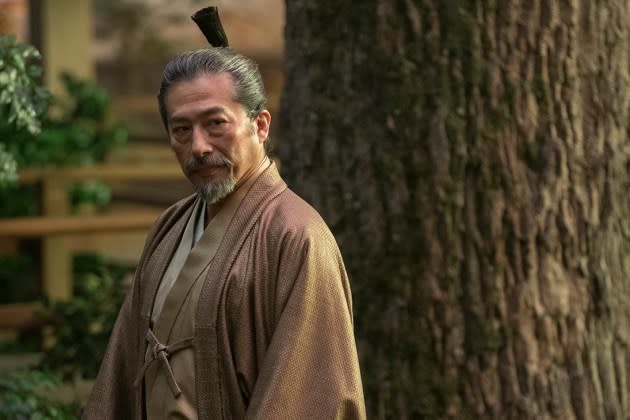
With the FX limited series Shogun, Disney might just have its biggest worldwide streaming hit to date. The first episode of the lavish period epic racked up 9 million streaming views globally, topping the latest season premieres of The Bear and Fargo, and the buzz around the show has only grown since. Shogun has been especially praised — in Japan as well as the U.S. — for the cultural accuracy and ravishing detail of its world-building, taking viewers into an alluring and reasonably convincing version of 17th century feudal Japan.
It’s a big win for a pricey project that took nearly 10 years to bring to fruition and often looked like a very uncertain bet. After Shogun went through years of abortive efforts to get into production at FX, husband and wife Justin Marks (Top Gun: Maverick) and Rachel Kondo (previously a fiction writer) boarded the project in 2018 as the new co-creators and executive producers, spearheading a whole new set of scripts. The duo elevated the series’ star, veteran Japanese actor Hiroyuki Sanada (The Twilight Samurai, Avengers: Endgame) into the dual role of producer, which would see him serve as a de facto cultural adviser to the show, assisting with everything from improving the scripts’ Japanese dialogue to casting many of the younger Japanese actors and making sure that traditional costumes were accurate.
More from The Hollywood Reporter
Stockfish Film Festival in Iceland Names Award for Eva Maria Daniels
'Inside Out 2' Trailer: New Emotions Voiced by Paul Walter Hauser, Ayo Edebiri Enter Riley's Head
Shogun is the second screen adaptation of James Clavell’s 1975 best-selling historical novel of the same name, following the popular 1980 TV miniseries produced by Paramount, starring Richard Chamberlain and Toshiro Mifune. The series follows the intertwined stories of three principal characters: John Blackthorne (played by Cosmo Jarvis), an adventure-seeking English sailor who finds himself shipwrecked in Japan; Lord Yoshii Toranaga (Sanada), a powerful feudal lord whose position is under threat by political rivals; and Lady Mariko (Anna Sawai), a woman of disreputable family background but who offers ability and ambition.
The Hollywood Reporter connected with Marks and Kondo to discuss the exhaustive processes they developed to ensure Shogun‘s cultural authenticity and whether the show, billed as a limited series, might get a second season now that it’s a smash success.
***
I understand Shogun underwent an especially long and twisty development process. Can you talk us through that journey and how you initially got involved?
JUSTIN MARKS It all started for us in 2018. I had just started my deal with FX and they sent over the book, Shogun. Generationally, that novel, for us, was the book we all grew up with our parents having on their nightstands. It was a book whose silhouette we understood, mostly from the legacy of its impact on the culture — because so many movies and television shows have ripped it off over the years. There have been so many stories that have used its “stranger in a strange land” archetype. So when FX sent it over, there was a representational side to it that concerned me — which, maybe I’m not the best person to speak to — but I was mostly worried that it was a saga we’d already seen a lot before, because of how influential the book had been. But then I started reading it and realized what a great, modern, intersectional story it is. And I immediately understood what FX was scratching around. The story is told from a variety of points of view, and now the time was right to adapt it in a way where you put the Japanese language and perspective at the forefront — to get closer to these characters, as opposed to keeping them at arm’s length. So that’s where we began.
RACHEL KONDO That’s where Justin began. You know, if Justin had concerns [about the representational issues], I did not. As a person of Japanese heritage, I thought, “Wow, this is great! I have things to say here — this is perfect. I want to speak to my culture.” But then, you know, as we got started, I very quickly realized that being a Japanese American is completely different from being a Japanese national. So there was a lot of learning and humbling on my part.
How did you initially approach the adaptation process? What did you feel was essential to Shogun‘s story and what did you feel you could, or should, take liberties with? And was the 1980 TV miniseries adaptation at all a reference point?
MARKS You know, the miniseries wasn’t for us. More than anything, I think that came from just never having seen it. The miniseries came out the year I was born, so we missed that boat. One thing I can say is that when it comes to adaptations, I don’t think you can go into it without truly believing in the source material. And that’s important to say, because given the appetite in the business over the last 10 to 15 years for things based on source material that has a big, preexisting audience, very often you’re put into situations where you’re like, “I don’t know, is this a movie? Is this a TV show? I don’t really see it, but maybe someone does — so let’s just do it cynically.” And that rarely works. You really have to believe in the story you’re telling. There may be elements of it that are ripe for updating, or that couldn’t have been explored in their time in the way that they can be now — but there has to be something healthy, which you love, at the core. And that’s what we really had with Shogun.
The story that James Clavell was trying to tell in 1975 is still the story we wanted to tell today. How do we encounter another culture? How do we encounter ourselves in that process? How do we create a language of curiosity, respect and humility when faced with what we don’t understand? All of these things were really impactful to us. It also helped that the book is just a really great page-turner. There’s just no other way around it. Both of us were like, “I can’t put this thing down!”
So amid all of the reasons you could come up with for not doing it — it’s so long, and think of all of the research that needs to be done, and we don’t even know how to build this production — we just fell in love with every character at every moment. We felt we had to tell this story.
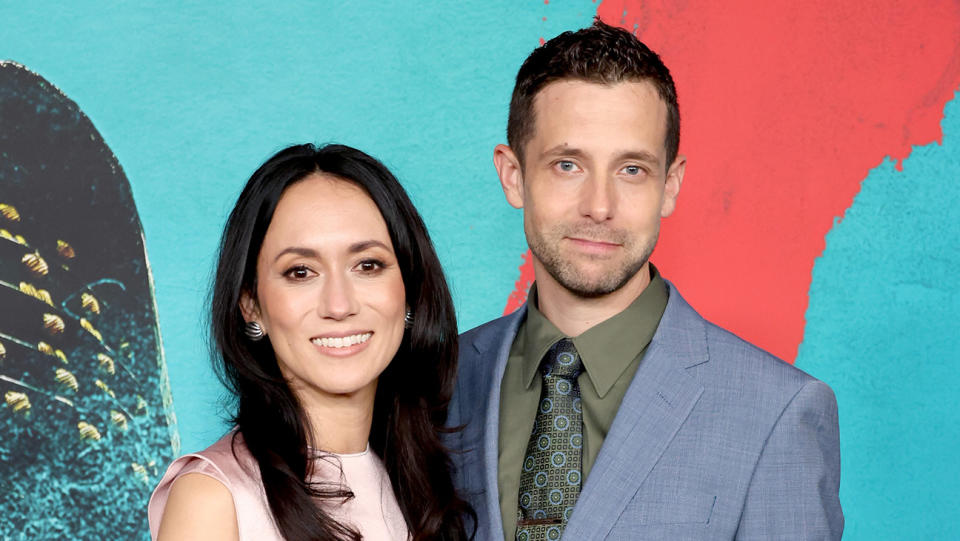
KONDO All of this is true. But I’ll also say, given that we are on the other side of things now, it was a very long five years. We’re, like, completely different people now. Going into it, thank God we didn’t understand what would be required of us — and how complicated a journey it would be — because we probably never would have had the courage to begin. And that’s a very Shogun-like theme: We didn’t know what we were getting into, and the whole time, we didn’t know what we didn’t know.
MARKS It did become a very John Blackthornian journey for us in that sense. Going from writing to prepping this with both a Japanese crew and a Canadian crew — and starting to question, what are we after, in terms of spiritual authenticity for this world we’re building?
Do you think you restructured how the story is told in any significant way? For example, you talked about the theme of a character encountering a culture they don’t understand. In your version, it seems we’re getting more of that from both sides, rather than just John Blackthorne’s — certainly compared to the earlier TV adaptation.
MARKS The book made most of the choices for us. Because of the way the 1980 miniseries came out, I think there’s a collective misunderstanding that the book is Blackthorne’s story. Of course, Blackthorne is a huge character and he’s sort of the inciting incident of the whole thing, but the book is a real three-hander in the way it’s constructed. And even more than that, because all of the additional, dynamic ensemble characters who all get their time in the book. So we just ran with that. When I think back to our meetings with John Landgraf, Gina Balian, Kate Lambert and Lindsay Donohue at FX, what we said was that everything in the book is great and we don’t want to change it. All we want to do is find ways to subvert the gaze. We would never be able to properly invert the gaze, because we’re Western filmmakers, just like James Clavell was a Western writer. What we are hoping to do is to subvert the gaze enough to surprise the audience — like, let’s see Blackthorne as the Japanese see him. Let’s have these moments where you get insight in both directions, or moments where you think you know what kind of scene it is, but then it’s going to go out the side door because we’re looking at it through a more modern lens.
KONDO Another choice that became more engaging as we went along involved the illumination of the female characters. We found that with any constraints the female characters seem to have — because of their gender, their class or their faith system — there was a way to tell the story of how they used their limitations as a form of power. All of their stories deepen in really fascinating ways as they are compelled to translate their limitations into empowerment.
I’m curious to hear how your writing process worked, since the majority of the dialogue is in Japanese but you did most of your initial scripting in English. There must have been so many steps with the translation of the scripts, and then being able to rejig the dialogue yet again when you write the English subtitles for the spoken Japanese. There must have been many opportunities to get things right in that process — but also lots of chances for things to go wrong, or get diluted.
KONDO This is our favorite thing to talk about. I can break our process into steps. As Justin likes to say, it often felt like we were building the car while already driving it down the road. So, we started in a writers room, and there were Asian American writers, but we were all Americans writing in English. Our scripts were then sent to Tokyo and translated by an excellent team of translators. From there, it was sent to a Japanese playwright who specializes in Jidaigeki writing (Japanese period drama, usually set during the Edo period of 1603 to 1868) and she put a literary touch to it. Then our Japanese producers, Eriko Miyagawa and Hiroyuki Sanada — who is also our star — oversaw that moment between taking it from the playwright and giving it to our actors to perform. And they were always discussing the scripts with Justin, asking, “Is this the intention? Is this what we are going for?” Naturally, the actors then gave it their own flair when they performed it. But the craziest part was the very long process of translating their Japanese performance back into the English subtitles. In the end, after all of the work we had already done, everything was back with Justin and I yet again, working through the painstaking process of trying to match what was being performed and what our English-language audience would be reading. Asking ourselves, “How do you bring these two closer together so that the subtitles enhance what you’re watching and don’t distract?”
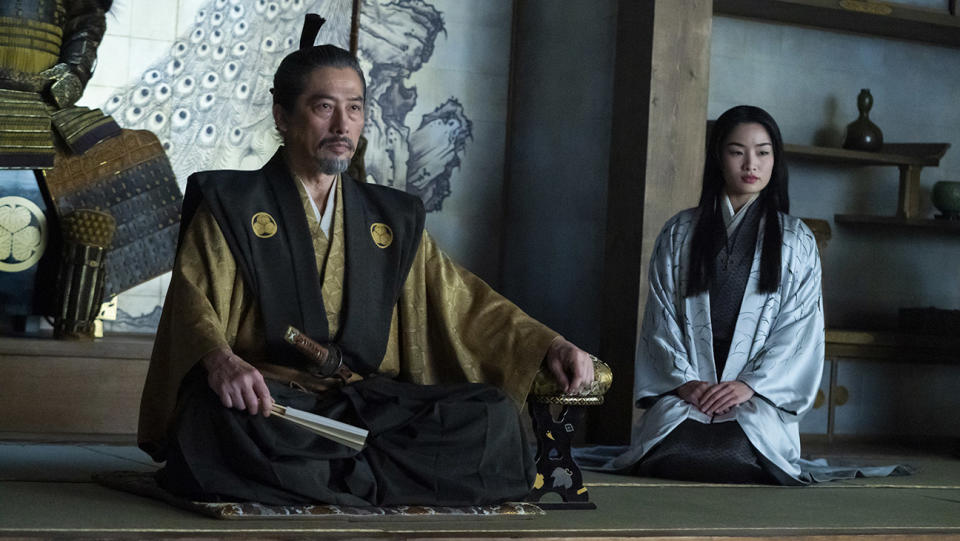
MARKS This process of localization had always been considered such an afterthought. I remember when I was a kid, some Kurosawa movies you could only get through Hong Kong Chinese distribution, so the subtitles would go from Japanese through Chinese to English. So, the names would be all wrong, because they’d be translations of the Chinese version and everything would feel kind of off. It was wild. In this day and age, we can’t afford to do that. You know, after we’ve spent so much time on not just the amazing performances, but also the historical accuracy of the costumes, the sets, and all of the amazing things you see onscreen — we really needed to pay attention to the precise details of the written words on the screen with the same diligence. We wanted to promise our audience that if we’re going to ask you to invest the time and energy to read this much subtitling at the bottom of the screen, we’re going to give you an experience that’s very curated and more carefully done than any other show with this volume of foreign language. So, our poor postproduction department had to endure the two of us as we basically went through a form of couples therapy as we were fighting over every detail.
KONDO So many debates.
MARKS I’d be like, “We should split this sentence here.” And she’d be saying, “No, it flows better if we keep it together.” And then, I’d be like, “No, we need an em dash.” And then we’d watch it 100 more times. And then I’d say, “OK, yeah, you were right. Let’s just leave it.” So many obsessive conversations like this.
KONDO No, no one ever said, “You were right.” It was always a fight. We’re a married couple. (Laughs.)
MARKS To be fastidious is the great right of the contemporary TV writer, so you might as well take it seriously, right? We also chose to bring the words higher up on the screen than you would normally see with subtitles if you watch a show with closed captioning. Our subtitles are closer to the eye line than normal and that reduces the fatigue you feel as an audience member. We also were very fastidious with the color timing behind the words, to make sure that the words were always jumping off the screen and you don’t get that white-on-white problem that we all remember from watching classic foreign films in black and white during our college days. I don’t know why, as an industry, we haven’t had a healthier audit of our subtitles over the years, because in this day and age, with content traveling the way it does, you have to do it this way.
It’s pretty amazing how much audience acceptance of watching subtitled shows has grown over just a few years.
KONDO It feels like we got lucky. Even just five years ago, when we started creating the show, I’m not sure people were as flexible then.
MARKS I think it applies to stars, too. A side effect of the peak content era was that with so many shows made — many hundreds — you couldn’t possibly fill them all with recognizable star faces. Because of that, audiences have become far more willing to accept shows that feature faces they don’t already know on a weekly basis. The first Shogun adaptation needed a Richard Chamberlain, but we didn’t.
Kondo: I think people are not only willing to accept the unfamiliar — they’re hungry for it.
I live in Japan, and the show seems to have gone over very well here, so far. Compared to past Hollywood attempts at telling Japanese stories, there haven’t been the usual complaints about embarrassing inaccuracies in the costumes and set design, or in the cultural behavior of the characters.
KONDO We were in Japan recently doing press, and it was interesting hearing from a few local journalists how they don’t feel it’s particularly offensive [when Hollywood shows or movies make lots of subtle mistakes in their depictions of Japan]; it’s more that it’s just really distracting. If you’re watching something that’s trying to portray a world with which you’re intimate, and the most basic things are slightly off, it’s just a nonstarter.
Yeah, like a cultural uncanny valley.
MARKS Hiroyuki Sanada, our star, is a man who has spent nearly his entire life in the Japanese film industry — he began as a child actor at age 6 — and then later worked in Hollywood for about the past 20 years. One of our first conversations with him when we came on board the project was us just asking, “How have we gotten it wrong? What are the mistakes from your eye watching these productions? What are the basic things that Japanese audiences are always so sick of seeing in Hollywood productions about Japan? And how can we adjust for that?” He was so great at not only helping us identify all of those potential missteps, but also in telling us the things that don’t matter so much to people. He told us that you can actually take a lot of liberty with the story, but you better make sure that every character’s obi is tied correctly. And you’d better make sure every kimono’s left lapel is over the right. [Traditionally, Japanese kimono is only worn with the right lapel over the left at a funeral — on the body of the deceased.] So, anytime we would try to flip a frame in postproduction for eye-line or other visual reasons, Sanada would be like, “Well, now everyone’s dressed like dead people. No go.” (Laughs.)
KONDO Our strategy was pretty simple: Empower the people who actually know what’s authentic, and then listen to them.
MARKS But there are also two sides to it. For one, our Japanese collaborators had to be willing to speak up and speak outside of the traditional hierarchy when they noticed something was wrong — sometimes coming straight to the boss to say so, which is, culturally, not always an easy thing to do for a Japanese crewmember. On the other hand, our wonderful Canadian crew had to be open to hearing it and to respond by saying, “Oh, OK, so this thing that we’ve been prepping for over the last four days is actually wrong and no one noticed it until now — so now we need to change course at the last minute and redo our whole approach? OK, well, that’s what we have to do then.” The fact of the matter is that the engine of production has been built to work in a very different way for a very long time. Top down. So, to invite more inclusivity into the actual production process, we had to make changes and fine tune the whole process constantly. It was not easy. That’s why you see these lines in our faces. (Laughs.)
KONDO We also had two children, back to back, in the middle of this whole process of making the show.
I have a newborn and a 3-year-old. I can’t fathom how you made an enormous TV show together while also coping with that kind of chaos at home.
KONDO It was crazy. But in a weird way, I’ve come to think it kind of helped. We got so used to dealing with chaos and just soldiering through it. (Laughs.)
Were there moments when it was hard to draw the line between cultural authenticity and accessibility for the viewer?
MARKS Seating positions was a huge debate. A professor at the University of Kyoto was a very valued historical adviser for us on this show. He had all this evidence that women in the period we were depicting sat in the tatehiza style [a traditional, formal way of sitting, which involves having one knee raised]. Somewhat later, in the Edo period, people started sitting in the seiza style [the now internationally familiar, Japanese style of kneeling on the floor with one’s butt on one’s heels]. But then our Japanese producers, Hiroyuki and Eriko, told us that Japanese audiences would really expect the characters to be sitting seiza style, because that’s the convention of samurai films and jidaigeki. Seeing the women sitting tatehiza would look weird to people today. So we had historical accuracy running up against the audience’s equally authentic expectations for a genre convention that evolved at some point. It became really hard. At that point, we had to step back and say, “OK, this is way beyond my cultural pay grade.” We let our Japanese producers decide — and they went with seiza.
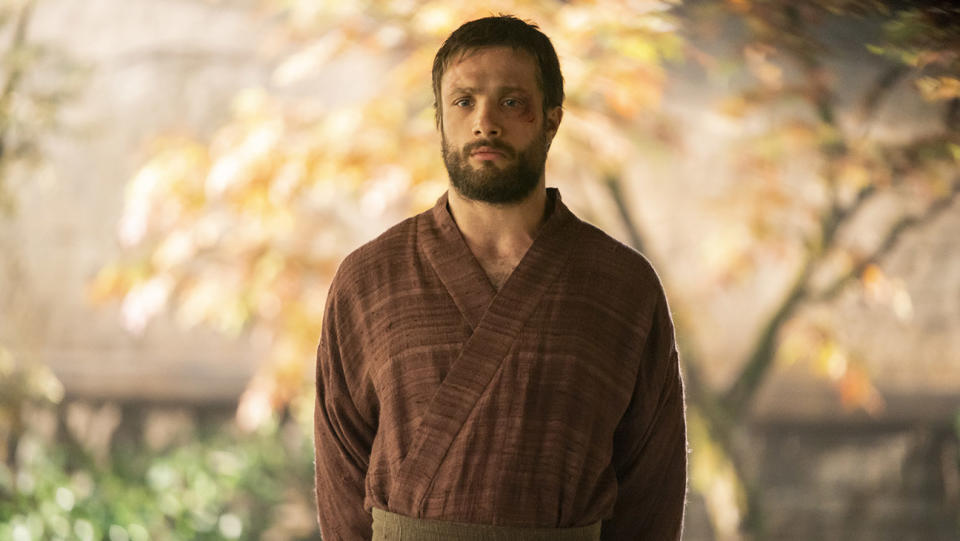
When the characters speak English for what is supposed to be Portuguese, I was so glad you didn’t have them try to do a Portuguese accent. Hollywood actors speaking English with an accent to signify that they are French or Italian, or whatever, is the thing that takes me out of movies these days.
MARKS Oh yeah, totally. I know some people are probably saying, “Oh, why didn’t they do the Portuguese in Portuguese?” The honest truth was that finding Japanese actors and Portuguese actors who could speak both languages was incredibly tough. I was trying to think of how we could find an actress to play Mariko who could speak perfect Portuguese and perfect Japanese, while also having the experience to be the star of a big show like this — and it was an impossible needle to thread. You know, looking back on the first miniseries 40 years ago, there are things that you can criticize, but they also got a lot right. My hope is that people will look back on our show and think the same thing. Maybe in 40 years, the next production will improve upon our show by having a whole roster of great Portuguese and Japanese actors who speak both languages.
Or maybe an AI will do it in three years.
KONDO Oh God, right?
What are your hopes and expectations for a second season? With everything you’ve learned, I’d imagine there is a lot you’d like to build upon and take even further with your processes and the realism.
KONDO Maybe you’ll connect with this as a parent. It feels a lot like parenting, where you get really good at, like, washing bottles, or all the other things that babies require, and then suddenly they don’t need any of that anymore. And you’re like, “Aw, I got so good at that.”
MARKS We took the story to the end of the book and put a period at the end of that sentence. We love how the book ends; it was one of the reasons why we both knew we wanted to do it — and we ended in exactly that place. And I’ve been party to this in the past with shows like this, where you build a whole factory, and it only pumps out 10 cars and closes up shop. It’s a bummer. You know, one of our producers wrote a nearly 900-page instruction manual for how we do this show — almost as long as the book Shogun itself. All of this infrastructural knowledge went into it. I just hope someone else — maybe a friend — needs a production primer on feudal Japan at some point, so I can be like, “Here you go, use this book. That will save you 11 months.”
That sounds like a fairly definitive no on season two, no matter how successful the first season becomes …
MARKS Oh, that’s just our bodies talking. Like, do you want to have another kid right now? (Laughs.) You know, we also made this show so long ago, because of the long tail of postproduction on it. It’s not like a normal TV series, where if we were in a situation like this promoting it, we wouldn’t just be in the writers room already, we’d be on set shooting season two by now.
OK, can I make a request? Have you read the book The Thousand Autumns of Jacob de Zoet by David Mitchell?
KONDO I don’t think we have, but I like the title already. I’m writing it down.
It’s another amazing period novel set in feudal Japan, a bit later in time than Shogun. So, can you just use all of your knowledge to adapt that book next and call it a pseudo-season two?
MARKS Fine, let’s just do that.
New episodes of Shogun release weekly on Tuesdays and are available to stream on Hulu and Disney+. Read THR‘s interview with Hiroyuki Sanada.
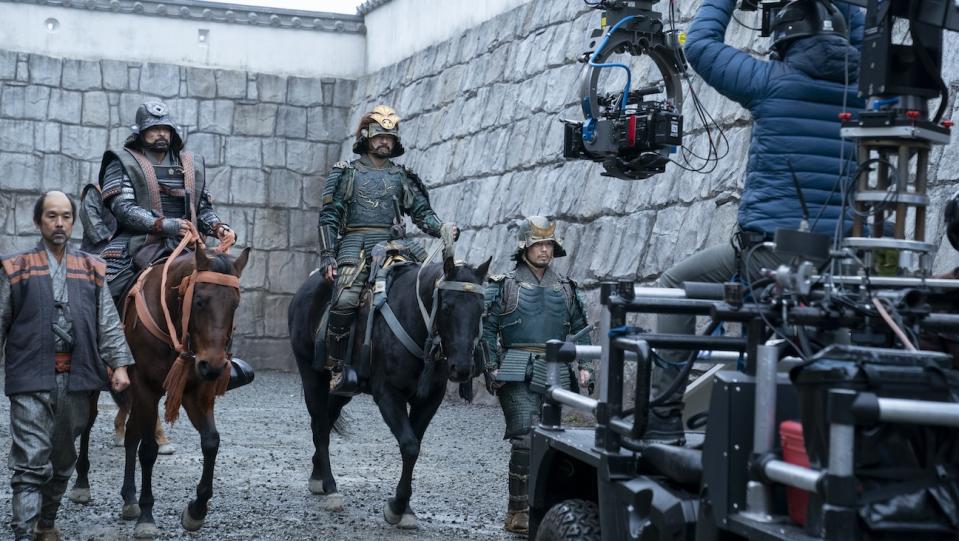
Best of The Hollywood Reporter
A 'Star Wars' Timeline: All the Movies and TV Shows in the Franchise
'Star Wars': 16 Animated Characters Who Made the Leap to Live-Action
Power Showrunners: Hollywood’s 50-ish Most Influential Writer-Producers of 2023

